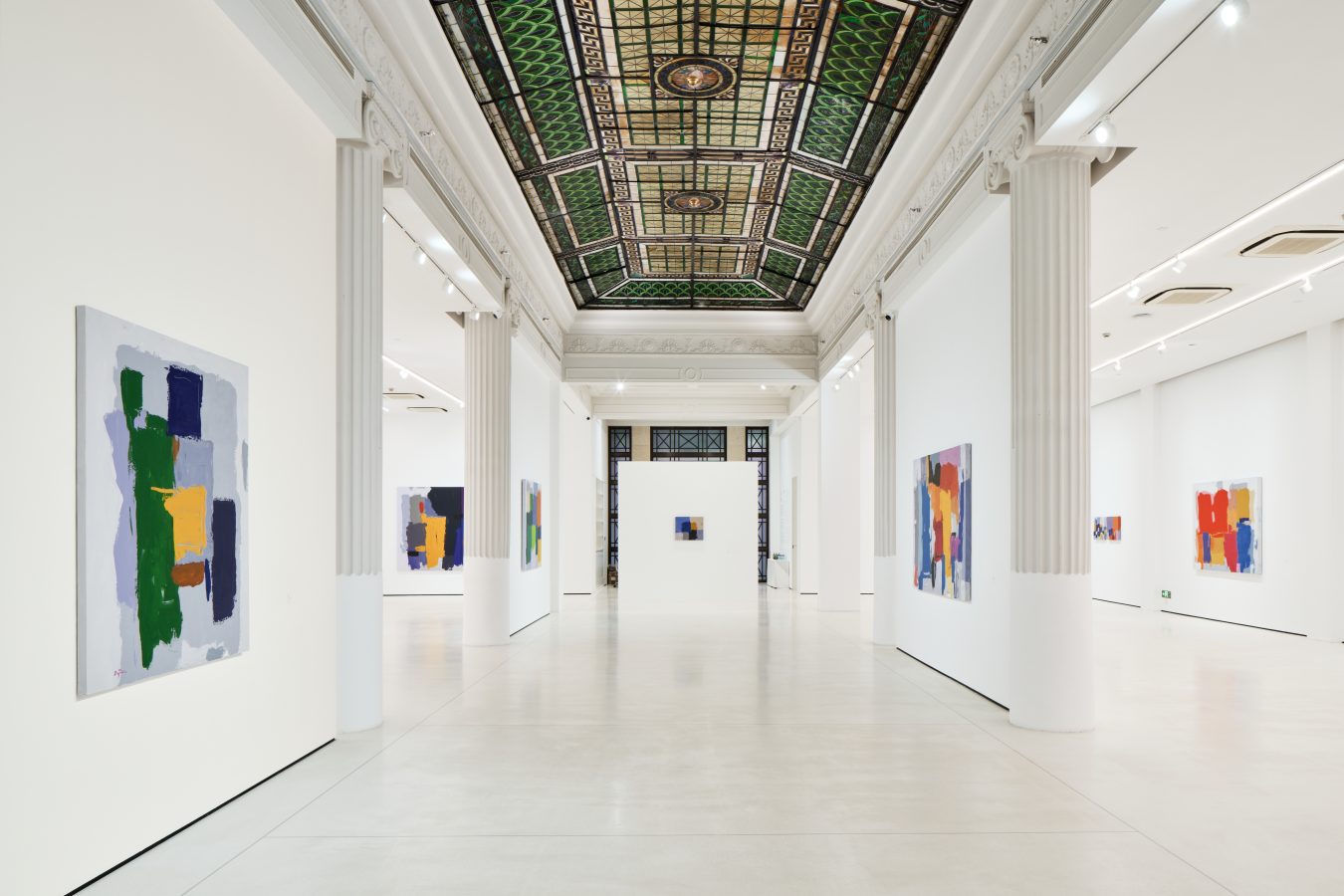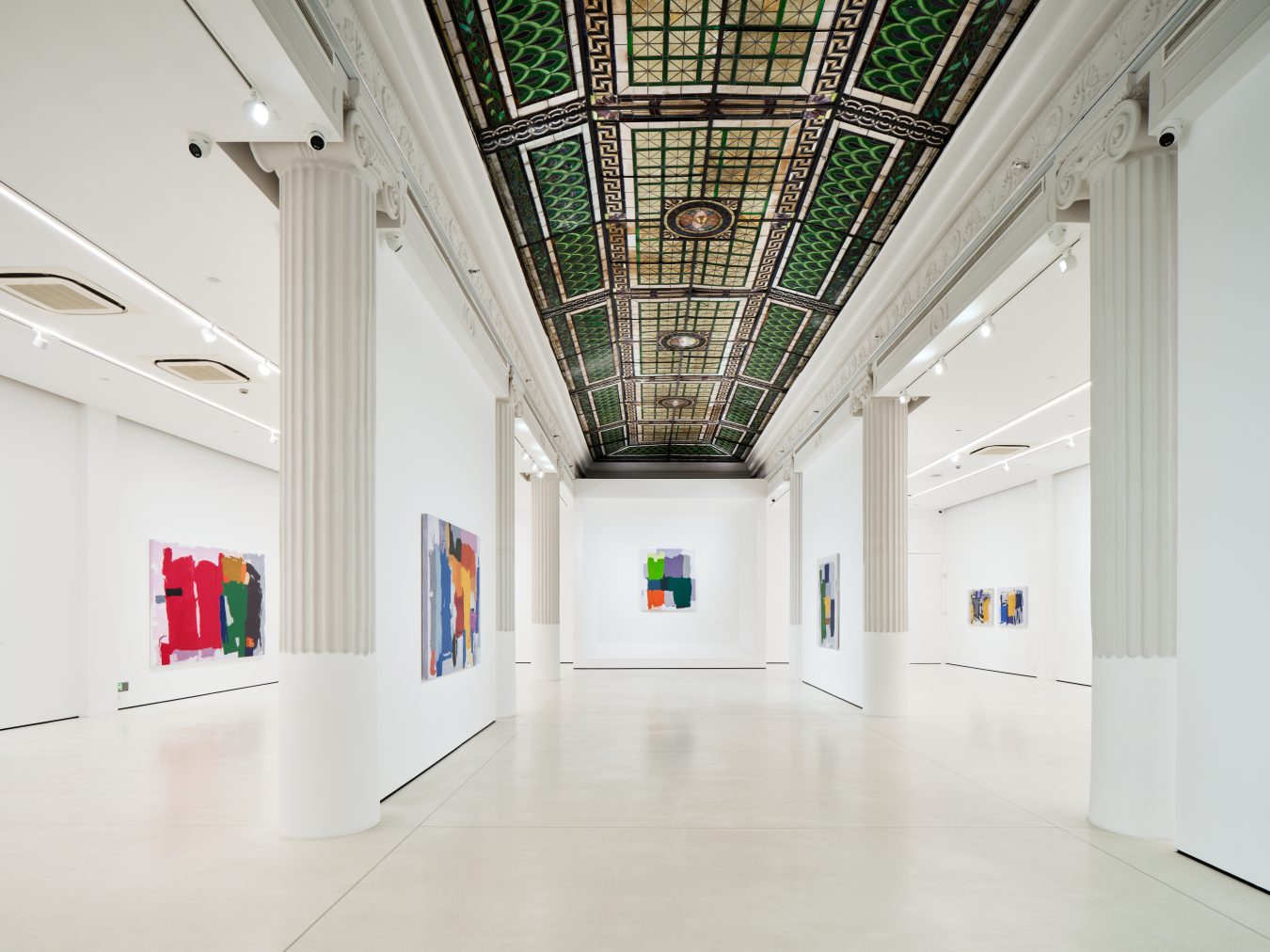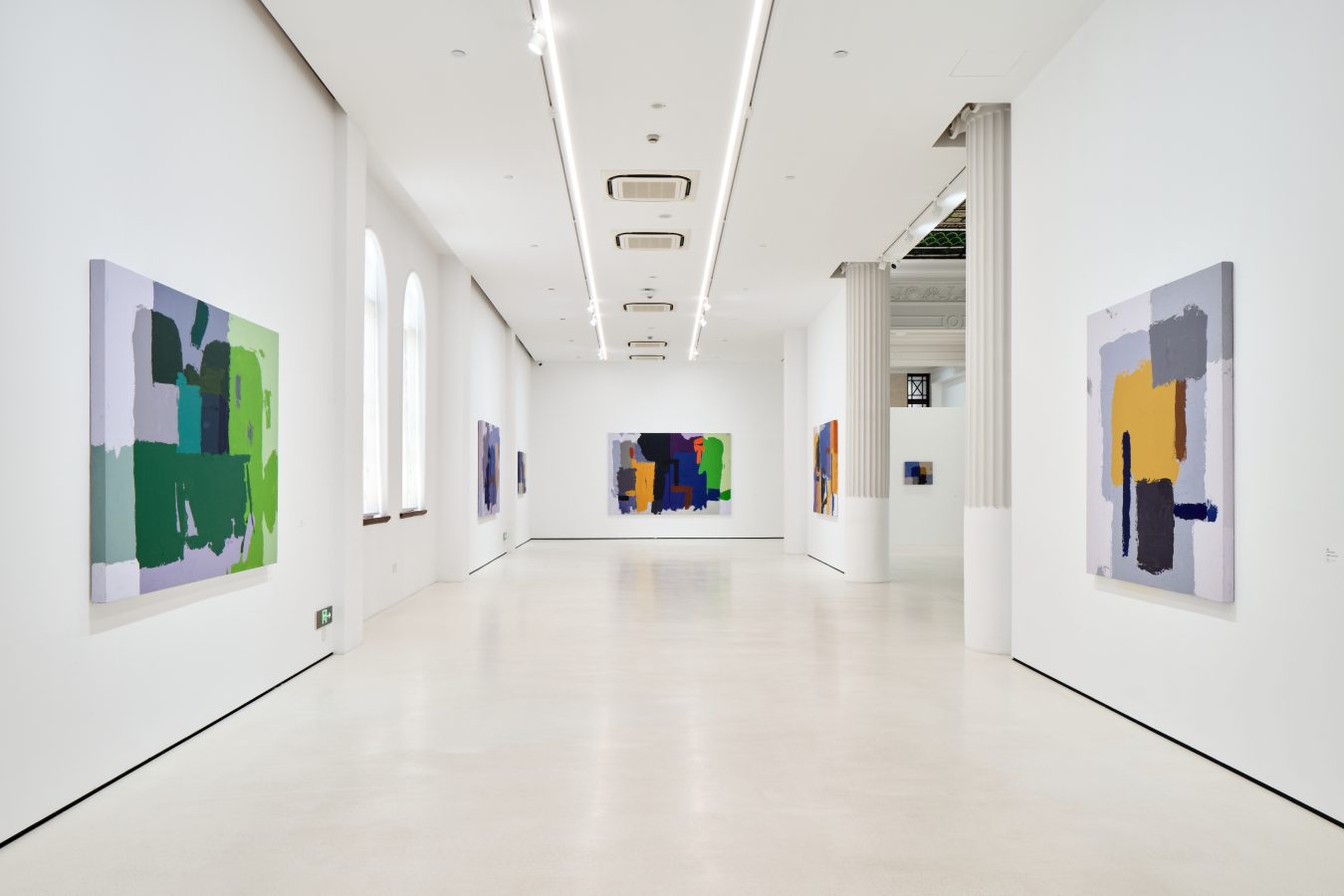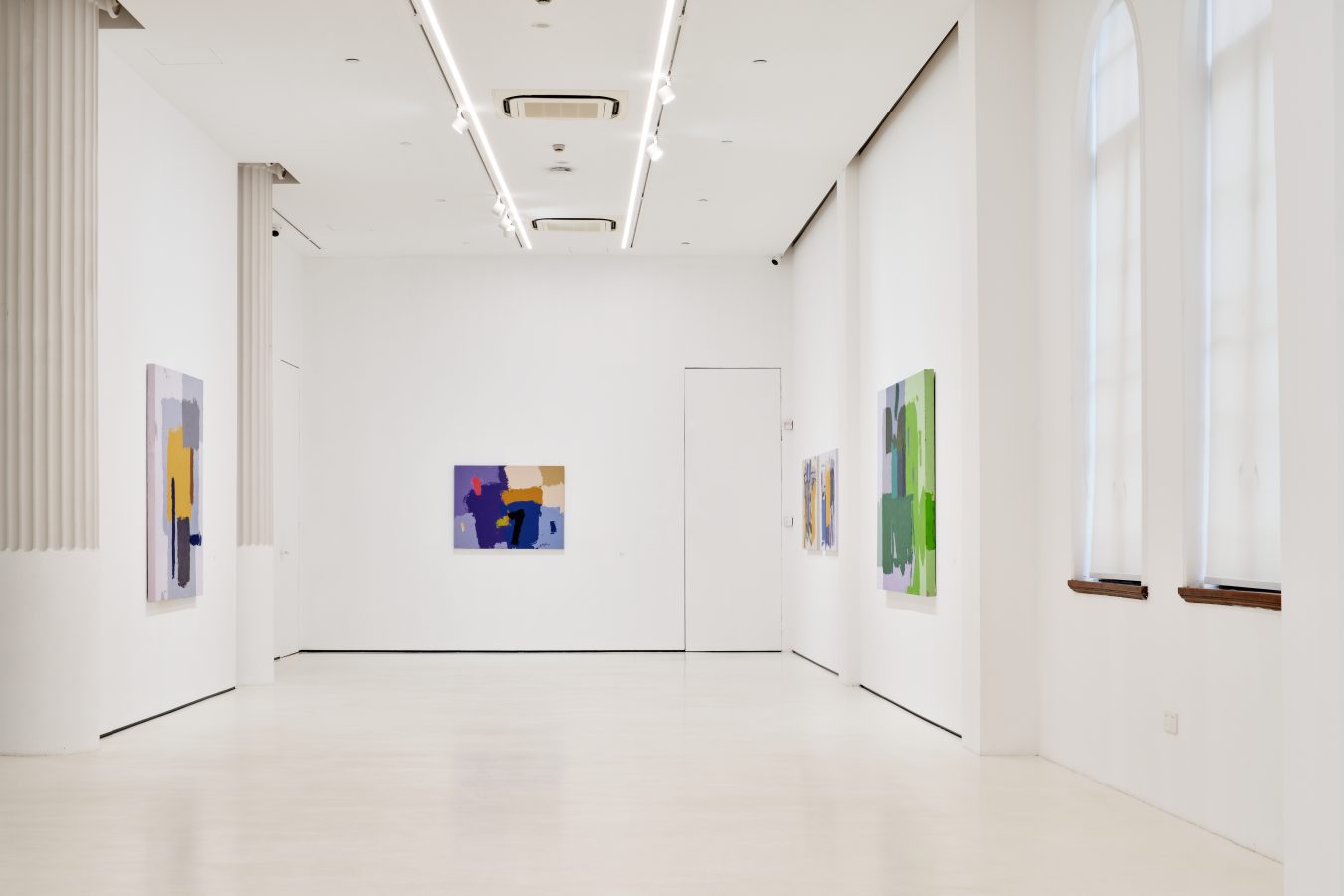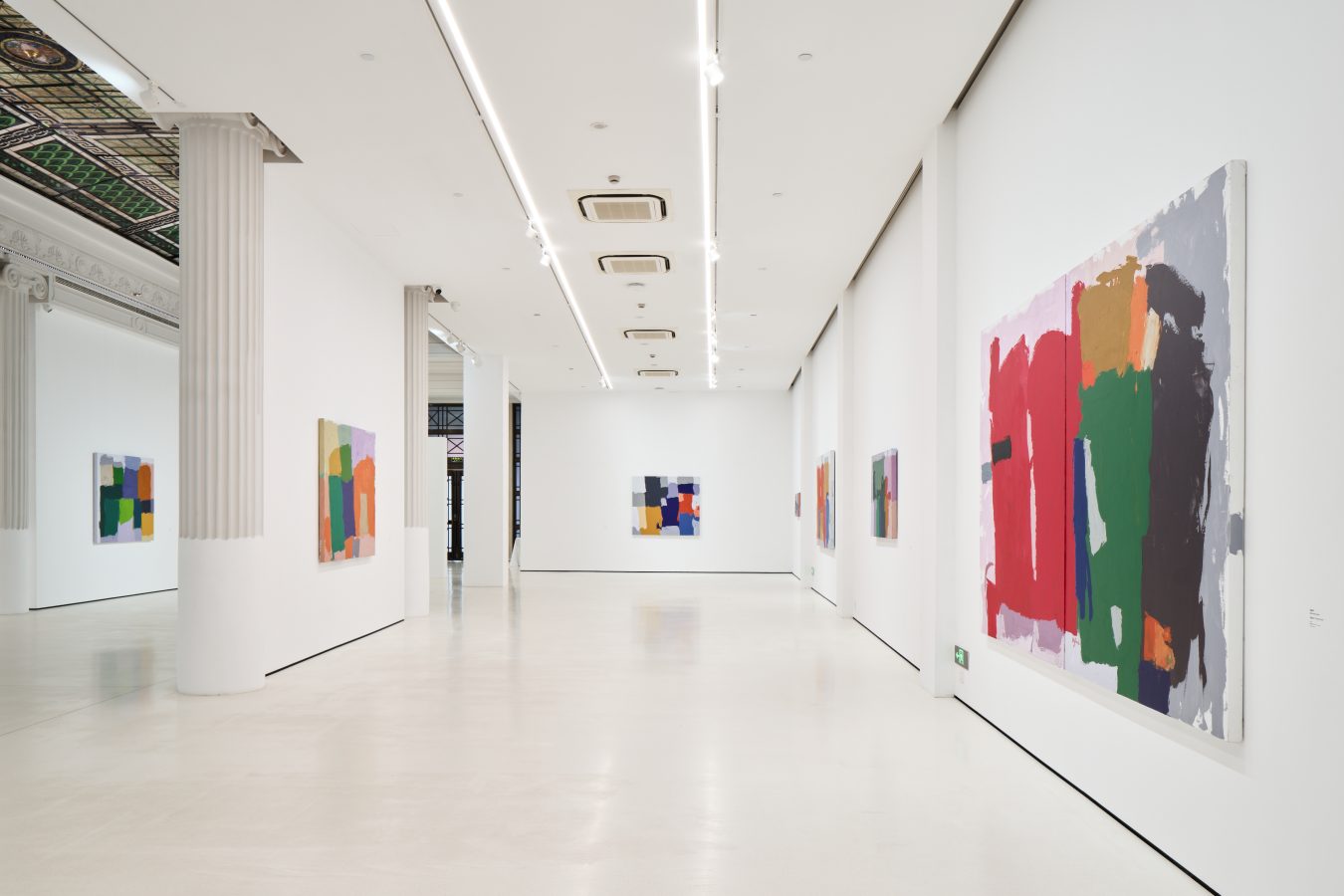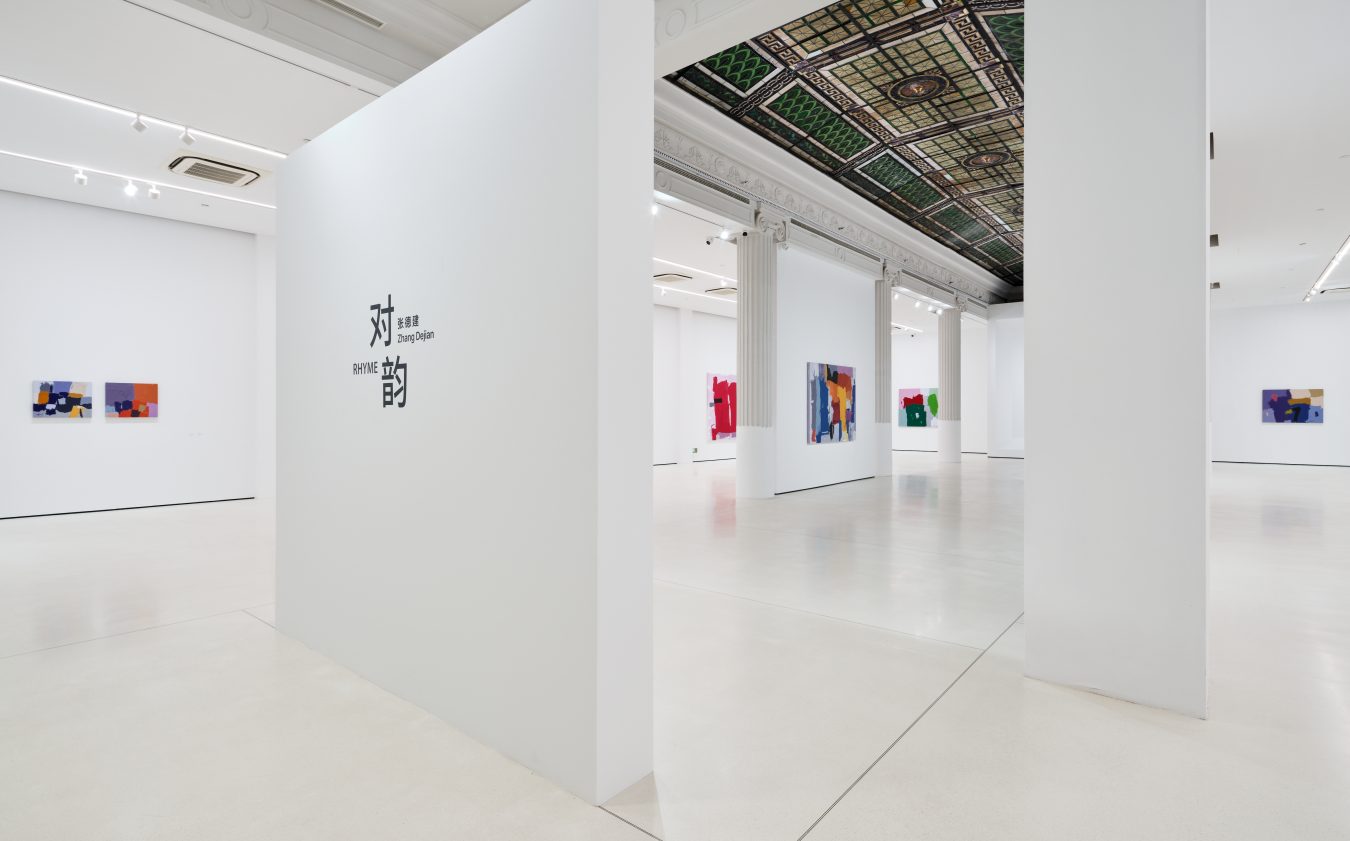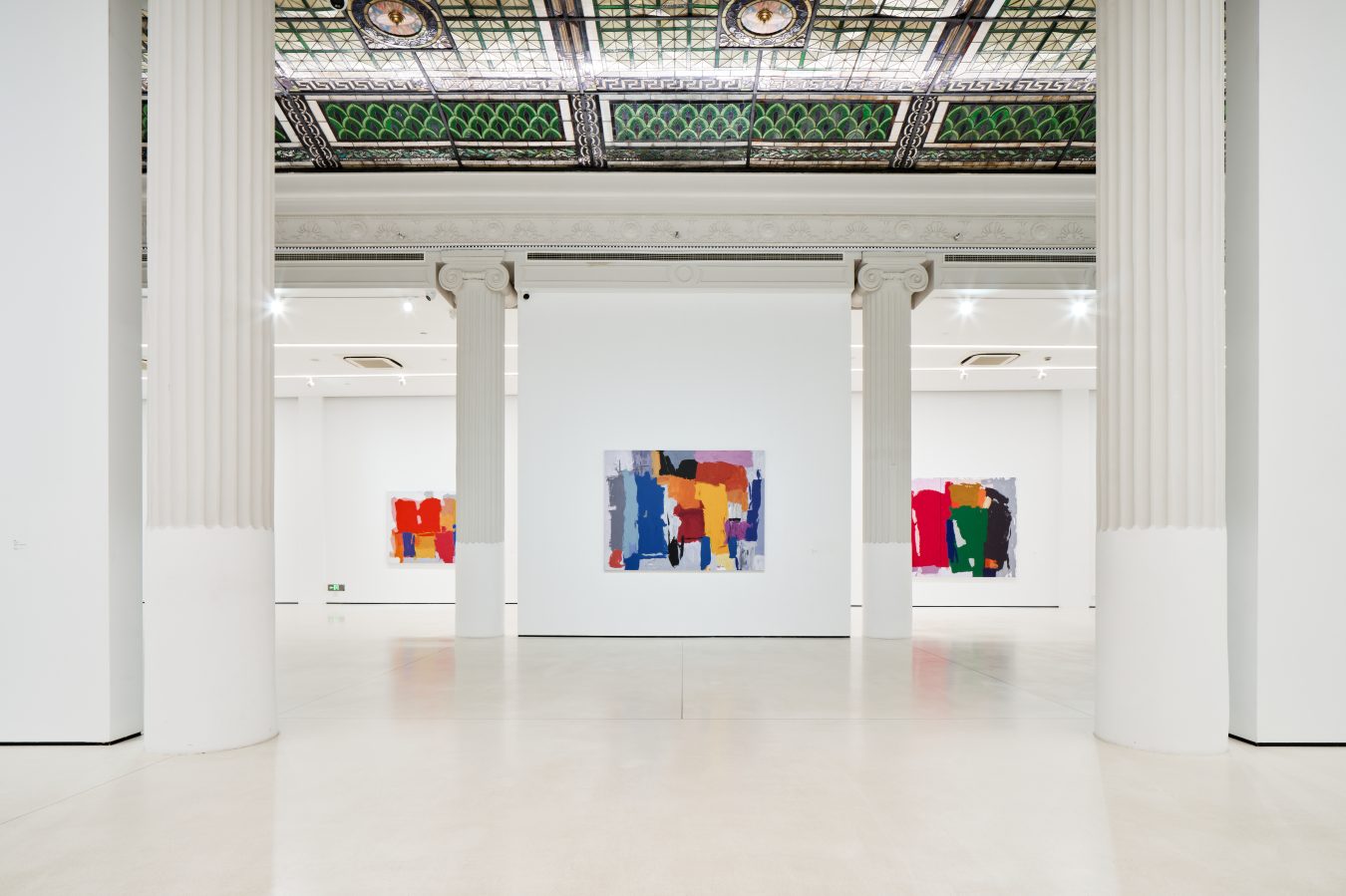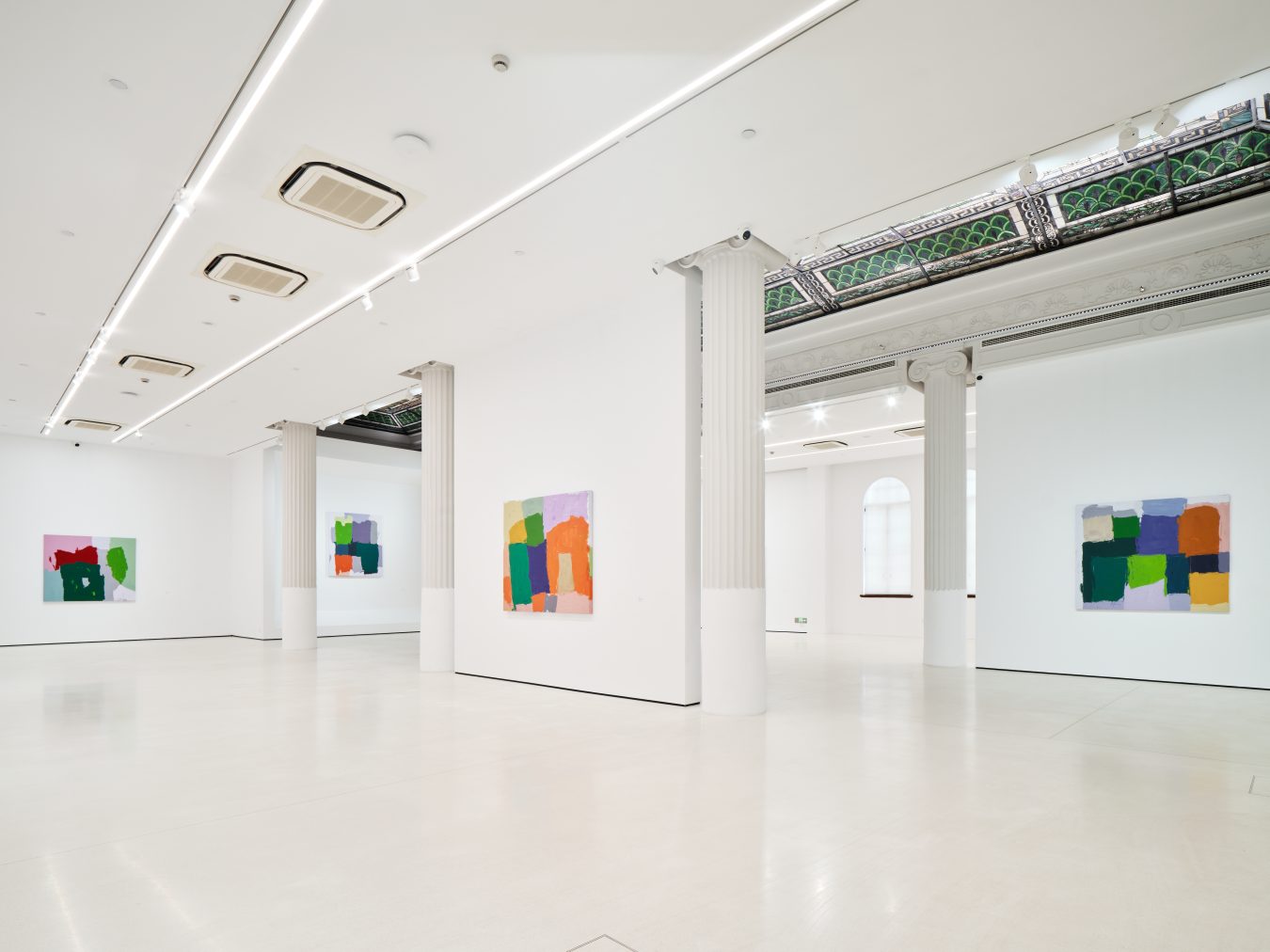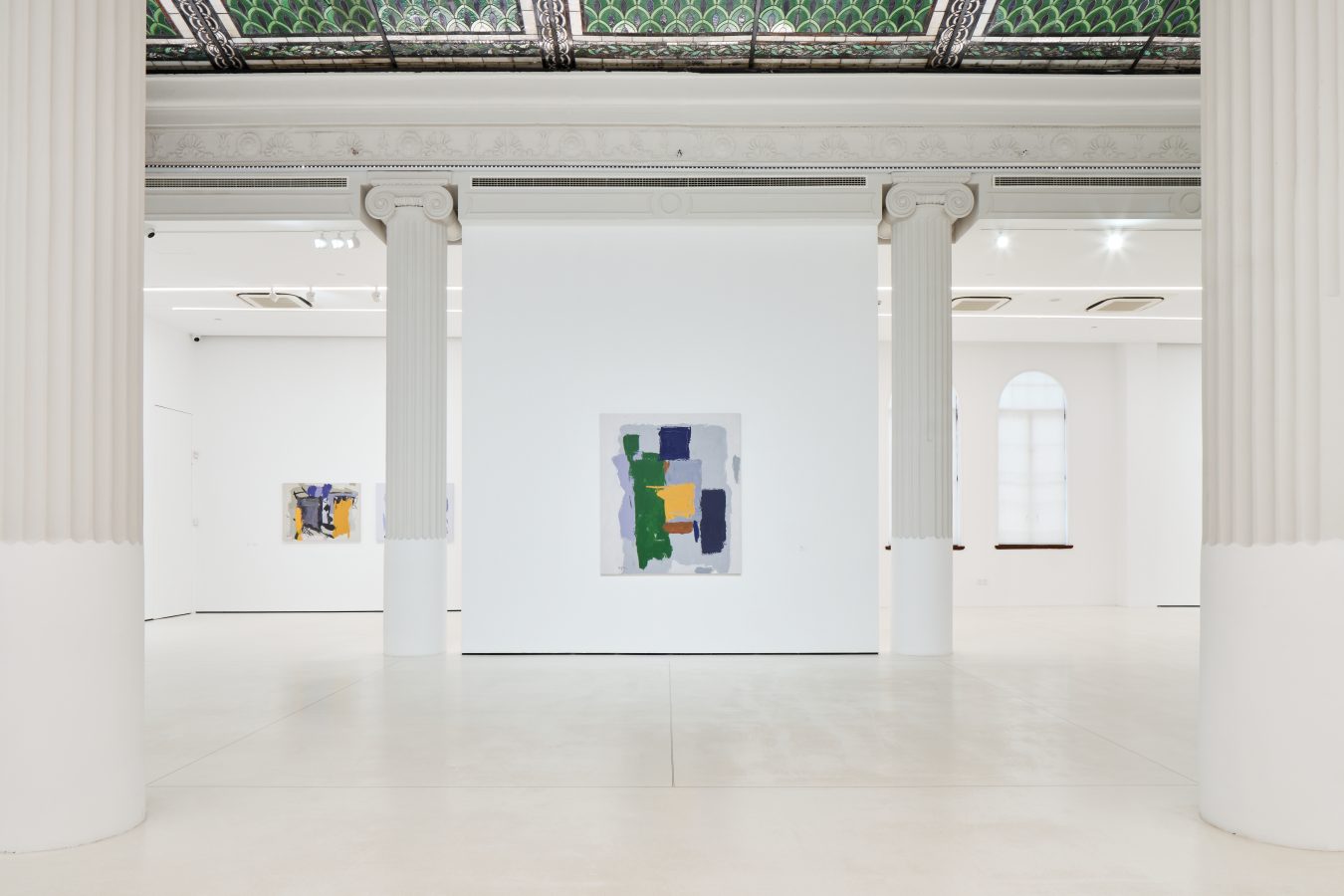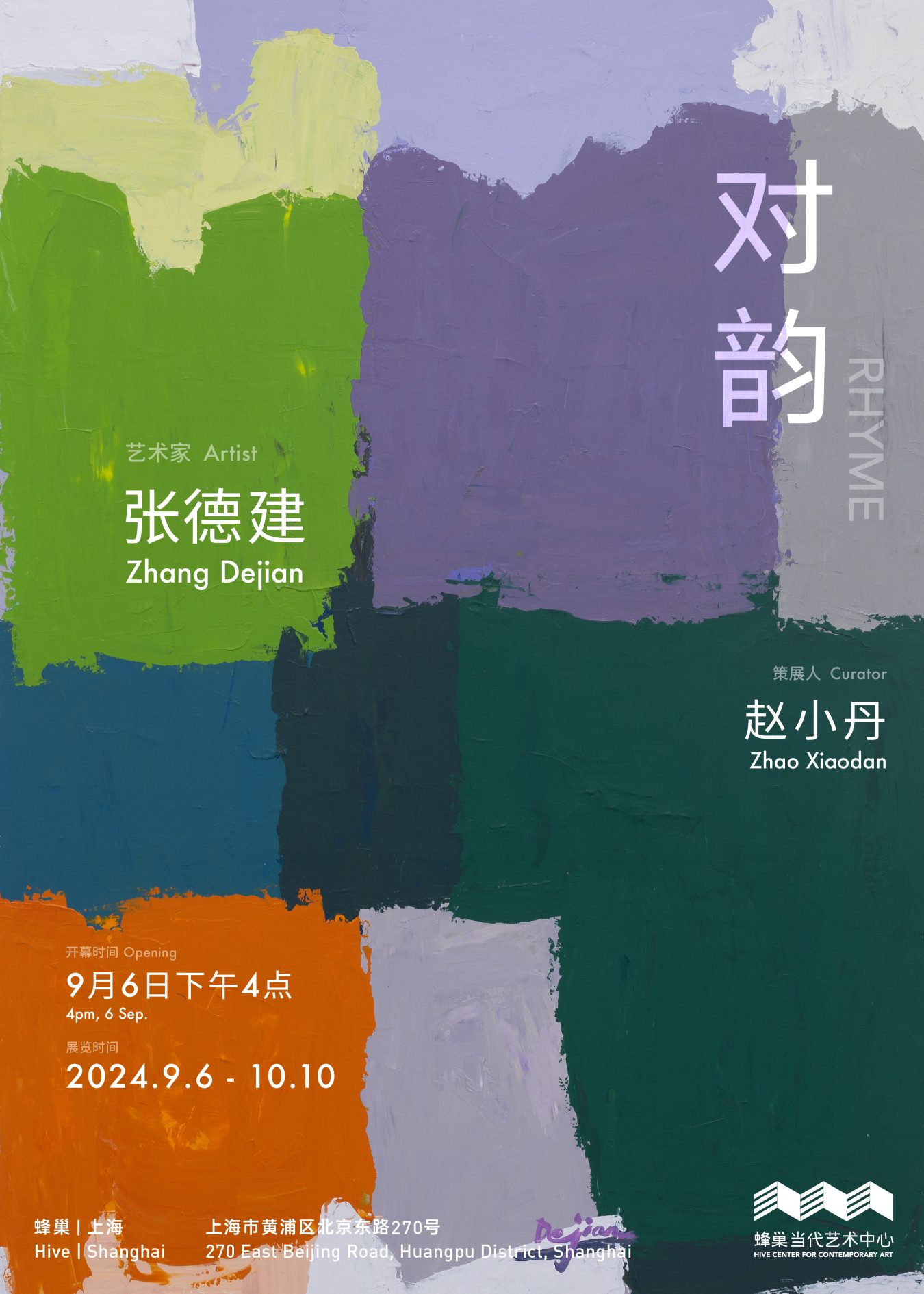Hive Center for Contemporary Art is thrilled to announce the opening of artist Zhang Dejian’s upcoming solo exhibition, ‘Rhyme,’ on 6 September 2024 at Hive Shanghai. This is the artist’s third show with the gallery following ‘Significant Form: Thirty Years of Paintings by Zhang Dejian’ (2017) and ‘Sensing Externalities’ (2019). ‘Rhyme’ compiles the artist’s works since 2020 and presents his most recent developments in painting. This show is curated by Zhao Xiaodan and is open until 10 October.
Born in Tianjin in 1952, Zhang Dejian enrolled at the renowned Tianjin Yaohua Middle School, where he was taught by Li Wenzhen, an art teacher who emphasised Purism at the time and introduced his students to the modernist ideas of Western painting. Shortly before entering his second year of school, when the Cultural Revolution first erupted, Zhang was sent to Goyang as a zhiqing, during which time he was reassigned to become an art teacher in Baotou. Retracing history in a subtler context, when Zhang returned to his hometown in 1974, he was transferred to the then Tianjin Art College as a worker-peasant-soldier student, at a time when the teachers there had been condemned as rightists for their modernist views in earlier years and had long since succumbed as a result. Meanwhile, in the cultural desolation of the early 1970s, members of the locally organised Red Grassland Painting Club, which studied the surviving catalogues and materials apart from the mainstream, also drifted apart for their own destinies in response to the changing times. Being the prevailing system after the resumption of education, the Soviet style of art influenced Zhang throughout his formative years. Although he deliberately attempted to marry the palettes of Matisse’s work and the evocations of the Eastern sensibility with the large-scale forms of Liang Kai, Zhu Da, and Qi Baishi, he was never able to escape from the confines of his painting practice and personal search for spirituality.
In 1998, Zhang Dejian qualified for the government-sponsored study abroad programme and spent a year as a visiting scholar at the Royal Academy of Fine Arts Antwerp, Belgium. What he had encountered and experienced that year was undoubtedly transformative in that not only was he immersed in the modernist paintings that previously only existed in print for him, but the ubiquity and accessibility of art as part of everyday life revealed to him another possibility beyond the mainstream Soviet style and simultaneously instilled in him the courage to explore and revolutionise. Following the return to Tianjin, although not immediately responding to his Antwerp experiences, Zhang rationally dissects and analyses the language of form and colour that he had absorbed in Belgium in the manner of a research project. For him, this reformation was tantamount to diving deep into the ocean to practice breathing and perceiving the world again at the age of fifty. ‘I am the space where I am,’ the portrayal of ‘corners’ with a sense of security and stability has become a new ground for establishing his personal reality, as well as a necessary path to reinforce his search for sensations and to approach the non-utilitarian aesthetic state.
Zhang Dejian’s works always have a certain poetical and philosophical appeal. From the turn of the century to 2010, Zhang Dejian envisioned his studio, surrounded by walls and windows, as a soundproof enclosure insulating from external noises. Accompanied by a shift in the artist’s vision and attention, his exploration of the relationship between lighting and colour, light and shade, black and white, etc., began with still-life objects, books, light switches, and other materials within sight. In modernist works, black borders are used to contain the vivid colours on the canvas, preventing the image from overflowing beyond the boundaries of vision. The unpredictable brushstrokes in Zhang’s works suggest a displacement of intent: the texts in the book shrinking in size and varying in clarity through a glass of water, light passing through striped curtains to create shades and folds, the intentionally enlarged light switches and their elongated shadows occupying one-third of the canvas, the falling Sun crossing and wrapping the skeleton of a building, the raindrops gliding across the figged glass creating a gradation of colour… The images gradually lose focus and disperse, revealing a meditative state of trance, as if the consciousness has penetrated through materiality and towards infinity.
If the flexibility of the brushstroke still potentially tempts the artist to depict physical objects, the certainty and crispness of the scraper and large colour blocks correspond more closely to Zhang Dejian’s capture, abstraction, and transformation of his subjects in yet another decade of self-exploration. Signifying the artist’s realisation of the manifestation of nature, ‘There is nothing behind the appearance; the appearance is the best guidance,’ Zhang seemed to have embarked on his own ‘Cézanne Moment’, transiting from paintbrush to scraper. The combination of the scraper and acrylic paint of subtle, skin-like texture not only mediates the artist’s visual and tactile senses but also mobilises his body in a more intimate approach. When using the scraper, Zhang deliberately incorporates the lineage of texture strokes and calligraphy, in which he upholds and preserves his contemplation on the aesthetic principles of traditional Chinese painting. As though arranging, shuttling, and wandering in a garden created by himself, the resonance of all elements in the painting gradually discloses an open nature of the space, while the occasional marks of the scraper also reflect the residual warmth of the artist’s spontaneous thinking. Since then, Zhang Dejian has emerged from the historical context of painting to become the establisher of the image and a new context.
The Chinese title of this exhibition originates from Couplet Rhymes of the Old Man with the Bamboo Hat (Lìwēng duìyùn), written by writer and dramaturgist Li Yu of late Ming and early Qing dynasties, which refers to the polyphony of the senses in Zhang Dejian’s most recent works, especially the emphasis of musicality and rhythm, continuously emitting the pleasant and relaxing signals within. Through colour and form, the artist constructs a vibrant, comprehensive, and complementary relationship between reality and illusion, distance, warmth and coldness, and flesh and bone, constantly reinforcing the interaction between personal perception, memory, and fantasy, and infinitely amplifying the scale of the surface, with air flowing like jellyfish in the interstices between colour blocks and lines. While Li Yu had established a poetic framework parallel to the world in ‘Couplet Rhymes,’ Zhang Dejian addresses the essence of appearance in the recurring cycle of gradual cultivation and epiphany. To create is not only a remedy for the artist to reconcile his individual destiny with the currents of time, it is also his meditative refuge where he settles his inner landscape, transcends the barriers of reality, and embarks on new journeys.
Reason can be enlightened, but practice requires gradual cultivation. Matisse realised the pleasure of life in his journey to the South Seas in his sixties; Cézanne reflected himself on Mont Sainte-Victoire and captured the glory of existence with a scraper; after leaving Hanlin Academy, Liang Kai was inspired by the Zen school to create the ‘abbreviated brush’; after a change in his perceptual composition, Qi Baishi resolutely embraced the ‘reform of the declining years’… With time and experience, they open themselves up to a new world, and Zhang Dejian, too, whilst having his predecessors glitter like stars in his intrinsic universe. The pursuit of pure expression of modernist aesthetics and the poetic inspiration of traditional Chinese painterly essence is intertwined with the artist’s complex experience of connection with the world. Over the course of many decades, Zhang Dejian’s painting practice has become a manifestation of intellectuality. In this fascinating mechanism of projection and exchange, the viewer is also able to perceive the inherent dynamic ambience of the artist’s work.
